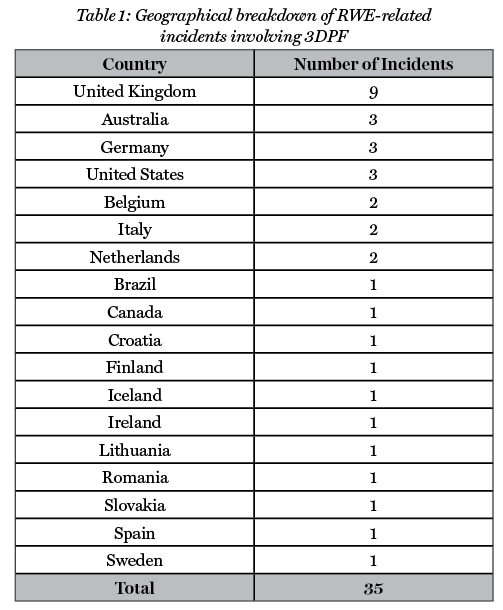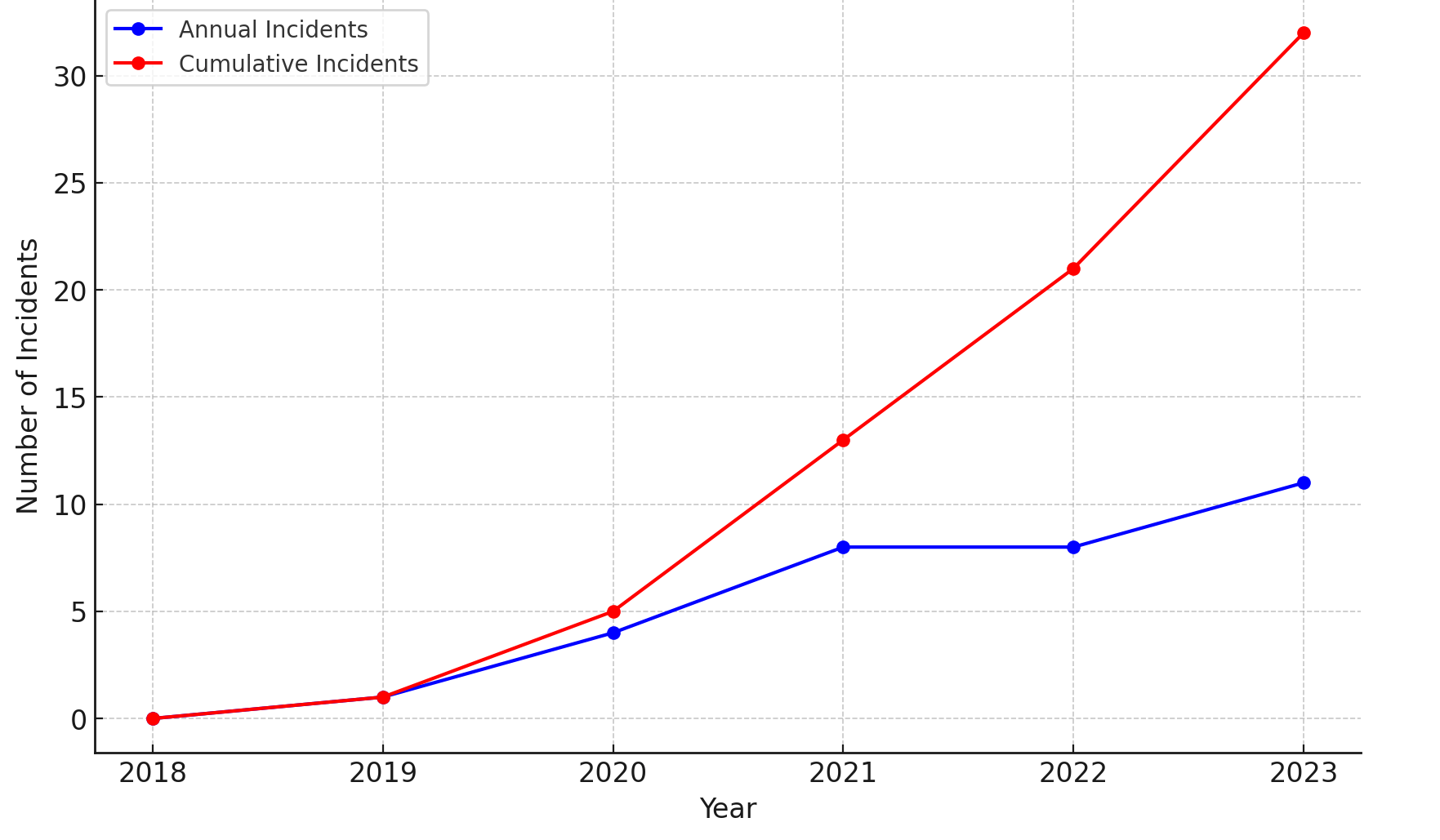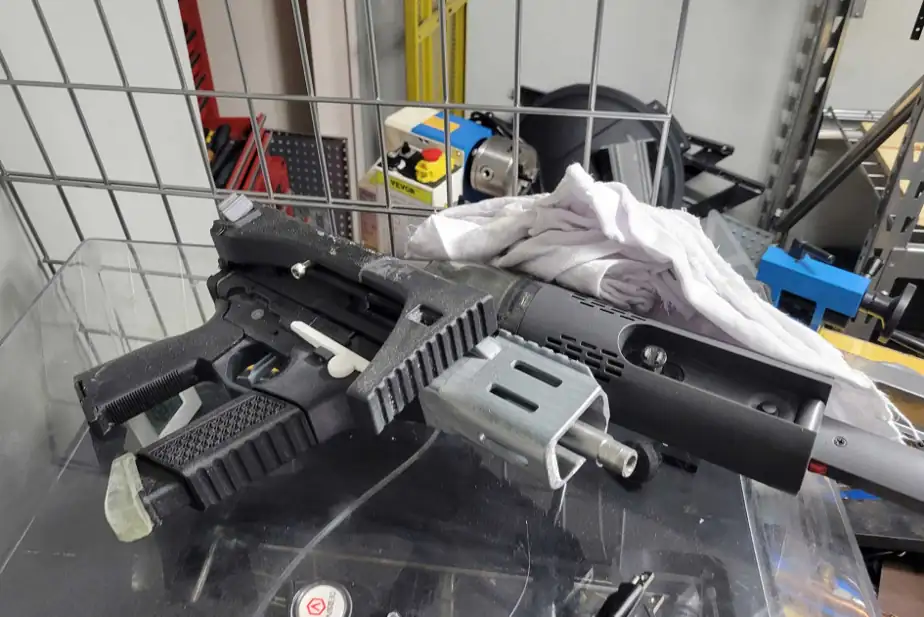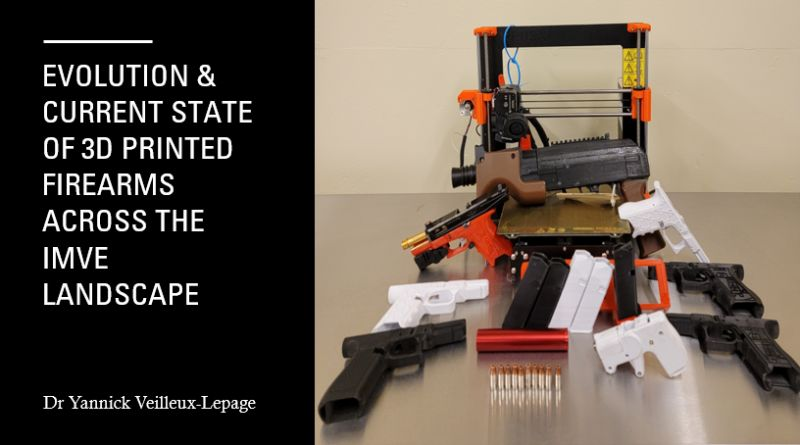In the last decade, there has been increased concern that some groups are turning to 3D printed firearms, creating new challenges for law enforcement. A recent study provides an in-depth look at this trend. Using data from 35 incidents worldwide, Yannick Veilleux-Lepage, a professor at the Royal Military College of Canada specializing in the use of emerging technologies by non-state actors, analyzes why these groups are adopting the technology and what it means for public safety.
The Appeal of 3D Printed Guns
Before delving into the details of the study, titled “Printing Terror: An Empirical Overview of the Use of 3D-Printed Firearms by Right-Wing Extremists“, it is important to note how the author defines “right-wing extremism.” Veilleux-Lepage draws on the Right-Wing Terrorism and Violence (RTV) dataset, which categorizes these beliefs as rooted in anti-egalitarianism. This ideology sees social inequality as natural or desirable and is often grounded in the perceived superiority of certain races, ethnicities, or genders. This belief system is part of a broader far-right ideology that includes exclusionary nationalism and authoritarianism, targeting various social and political groups as enemies. This framework underpins violence against minorities and liberal-democratic institutions, fueled by racism and conspiratorial thinking.
According to the study, Veilleux-Lepage describes right-wing extremists as turning to 3D-printed firearms for several reasons. Many see them as symbols of defiance and independence. The act of creating a gun at home, bypassing regulations, aligns with their anti-government and libertarian views. Additionally, 3D printed guns can boost their existing stockpiles, increasing their arsenal without the risk of detection that comes with buying new firearms.
These individuals also find 3D printing useful for avoiding legal scrutiny. Printing guns at home means they can skip background checks and surveillance, making it tougher for law enforcement to track them. Moreover, printing and selling these guns or parts has become a way to finance their activities. The low cost of production and high resale value make this an attractive option.
While this study specifically focuses on the use of 3D printed firearms by what Veilleux-Lepage describes as right-wing extremist groups, it’s important to note that not everyone who makes 3D printed guns falls into this category. In the U.S., individuals can legally create their own firearms for personal use as long as they comply with federal laws and do not sell unserialized weapons. In Canada, it is illegal to manufacture or possess a firearm without the appropriate licenses and registration certificates, with severe penalties for violations. Similarly, in Europe, various countries have strict controls and regulations to prevent the illegal use and distribution of 3D printed firearms.
Nonetheless, the study points out that most designers and builders of 3D printed weapons operate lawfully in jurisdictions where such activities are permissible. However, the transnational nature of right-wing extremism and global communication networks means that technological know-how spreads rapidly, and their production is accessible to those wanting to act outside the law.
Veilleux-Lepage highlights countries that are adopting new strategies to address this issue. For example, Singapore and New South Wales in Australia have made possessing digital blueprints for 3D printed guns illegal. Similarly, Canada’s Bill C-21 aims to create offenses for possessing or distributing blueprints and other computer data related to firearms or prohibited devices for manufacturing or trafficking purposes.
“3D printing is a paradigm-shifting technology. As such, it has and will continue to revolutionize many facets of everyday life,” Veilleux-Lepage told 3DPrint.com. “Unfortunately, paradigm-shifting technologies also create vulnerabilities that can be exploited by malevolent actors, whether they be criminals, terrorists, insurgents, or extremists. This article focuses on right-wing extremists’ use of 3D printed firearms, but it is important to note that additive technologies can be misused in other ways. For example, drug trafficking organizations have used 3D printers to hide narcotics in ubiquitous objects such as Nintendo game cases and ink cartridges. We also know that Iranian intelligence operatives were caught in Belgium trying to smuggle half a kilogram of explosives hidden in a 3D printed remote control. With any paradigm-shifting technologies, it is crucial to carefully try to understand how bad actors will seek to exploit them.”
What Veilleux-Lepage considers extremist groups pose a unique threat by using 3D printing to create weapons for violent acts, bypassing laws designed to control gun ownership and manufacturing. The author claims that this study clearly illustrates that the utilization of 3D printed firearms by right-wing extremists is not merely an issue of weapon possession but deeply intertwined with the symbolic and ideological underpinnings of these groups.

Geographical breakdown of right-wing extremist-related incidents. Image courtesy of Yannick Veilleux-Lepage/Royal Military College of Canada
Right-wing extremists’ use of 3D printed guns has been on the rise since 2017, with incidents reported in 18 countries. The study found that the U.K. has seen the highest number of cases, likely due to its strict gun control laws, which drive extremists to seek alternative means of arming themselves.
One of the most notorious cases is that of Stephan Balliet, who attempted an attack on a synagogue in Germany in 2019. He used several homemade weapons, including 3D printed firearms, to try and carry out his plan. Balliet’s case pointed to the symbolic importance of these weapons within extremist circles.
In another instance, a right-wing extremist group in Finland planned racially motivated attacks using 3D printed guns. Their social media activity showcased the blend of extremist ideology and 3D printed gun craftsmanship, with members posting pictures of their weapons alongside Nazi symbols.

Annual and cumulative RWE-related incidents involving 3D printed firearms. Image courtesy of Yannick Veilleux-Lepage/Royal Military College of Canada
Transnational Networks
The study also revealed that many incidents involve transnational networks. Extremists share blueprints, techniques, and support across borders, making it a global issue. For example, in November 2023, a network operating in Belgium, Croatia, Germany, Lithuania, Romania, and Italy was disrupted, with several arrests made. This network had been sharing extremist propaganda and 3D printed weapon manuals online.
As the author states, the rise of 3D printed weapons presents significant challenges for law enforcement. Traditional methods of tracing firearms often rely on serial numbers and other markings, which are missing in 3D printed guns. This makes it harder to track their origin and ownership. New forensic techniques are being developed, such as analyzing unique marks left by 3D printers, but these are still in the early stages.
The study points to the need for continuous monitoring and international cooperation. Veilleux-Lepage suggests law enforcement agencies must adapt their strategies to address the evolving threat of these weapons. He suggests better forensic capabilities and data collection are key to developing good responses to this issue. What’s more, the study calls for stakeholders, like law enforcement, policymakers, and the international community, to work together to mitigate the risks associated with 3D printed guns, especially as the barriers to entry for producing them continue to lower..
“The majority of the population has not yet grasped the significant technological advances in 3D printed firearms over the past decade. In my work, I regularly speak with policymakers, law enforcement, and intelligence officials who often mistakenly believe that 3D printed guns are largely unreliable and poor substitutes for conventionally manufactured firearms. I fear that public awareness of this issue will only improve when it’s too late. There is a palpable desire among right-wing extremists to use 3D printed firearms to commit atrocities. Since my article was accepted for publication in early June, three additional cases have come to light, bringing the total number to 38. This troubling uptick underscores the urgent need for increased awareness and proactive measures to address the misuse of this technology by extremist groups. While no single measure will solve the problem, a combination of improved data collection, multidisciplinary analysis, and proactive design measures can significantly mitigate the risks associated with the misuse of 3D printing technology.” concludes Veilleux-Lepage.
Subscribe to Our Email Newsletter
Stay up-to-date on all the latest news from the 3D printing industry and receive information and offers from third party vendors.
You May Also Like
The Third World War & The Disruption of US Military Power
A Reddit user once remarked, “The most terrifying capability of the United States military remains the capacity to deploy a fully operational Burger King to any terrestrial theater of operations...
Australia to Go Orbital: Gilmour Space Gears up for Historic Launch
Australia is on the brink of a historic achievement in space exploration. Gilmour Space Technologies, a pioneering company based on the Gold Coast, has secured the nation’s first-ever orbital launch...
3D Printing Webinar and Event Roundup: November 10, 2024
We’ve got another busy week ahead of webinars and events around the world! There are multiple open houses and conferences, advanced AM training, a 3D printer launch event, our own...
3D Printing News Briefs, November 9, 2024: Concept Car, Afloat 3D Printing, & More
In today’s 3D Printing News Briefs, we’ll start with business, as Anisoprint appointed AM industry veteran Tuan TranPham as President of the Americas and APAC. Then we’ll move onto automotive...






































